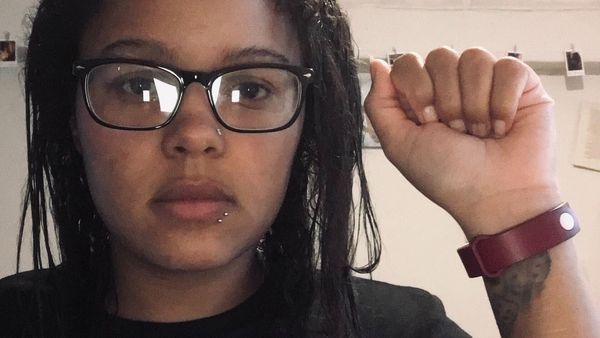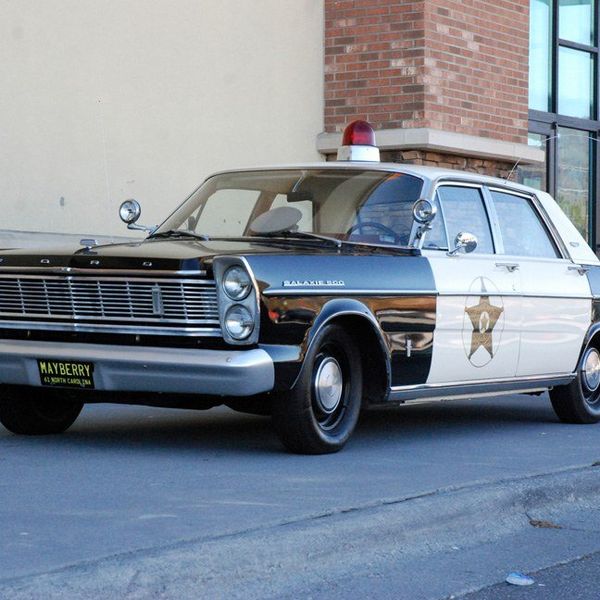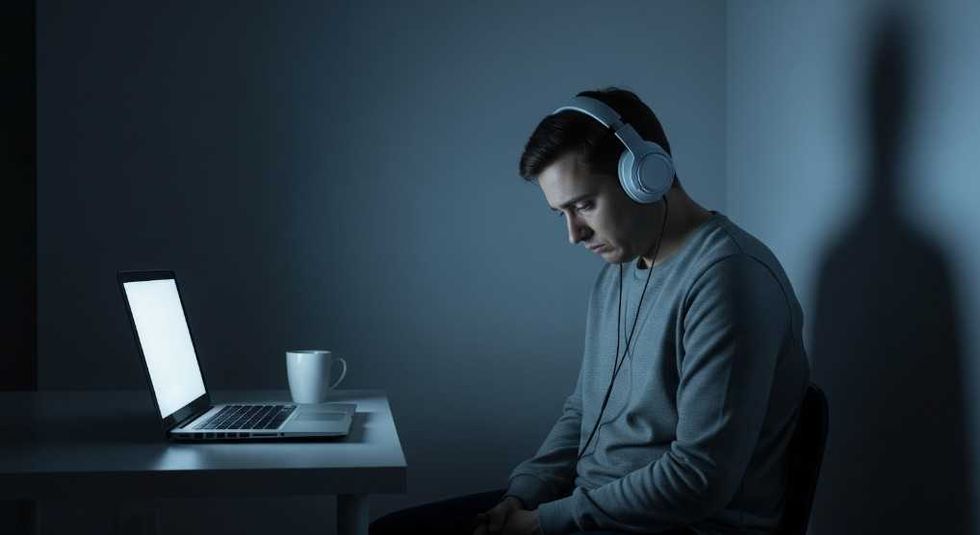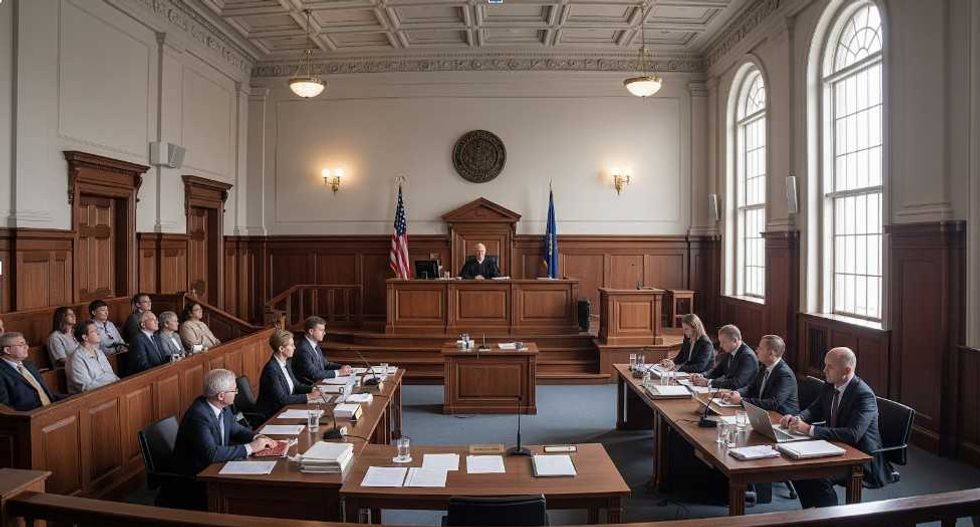Trust is something that not many people have amongst each other. It is an immensely scarce factor – especially nowadays. Establishing trust is not something that you can just initiate overnight – it takes some time for individuals to get acquainted with one another. Mistrust greatly powers over trust because of the way society has changed over the years. Not only is mistrust a national/societal situation but race has once again divulged greatly into the mix. Before you talk about the conflict between whites and blacks, you have to understand where the problem is rooted from.
More than likely, mistrust between black and white communities started hundreds of years ago. When the whites captured all of the blacks they could get their hands on and made them turn into their slaves, mistrust between the two races was born. It was instilled into the blacks at that time to not ever trust the white people because they are “no good.” Whites, thinking that they were superior from what they were taught, treated the blacks in such a way that made them hate the whites even more. Whites were supposedly afraid of the black because they were inhumane and not like them in the sense of their skin pigmentations being different in color.
As you can see, the mistrust between blacks and whites was planted and grew a multitude of years ago but still is present today. Currently, police officers are seen as “the bad people” or “murderers” to some people in the urban community. Because of everything going on, they (the officers) are not trusted at all. When young black kids today are going out, they are warned by parents, family members and loved ones to be careful because of what police officers are doing to black people today. I have seen this firsthand and have even been warned myself when I plan or am going out. No, not all officers are bad; people seem to forget this when they are watching the news. However, a handful are and you need to be cautious and obedient so the confrontation doesn’t result in a family losing a loved one.
An officer stops someone when they believe that they are or look suspicious: “A stop takes place when a law enforcement officer has reasonable suspicion that a criminal activity is about to take place” (Gaines and Miller, 2014, p. 186). This is where racial profiling, which is “the practice of targeting people for police action based solely on their race, ethnicity, or national origin” (Gaines and Miller, 2014, p. 186), may or may not begin to take place. Sometimes, an officer is not even trying to be racist when they target or stop a minority – it just inadvertently happens. Many times, people do not realize that they are doing something wrong until someone points it out to them. However, when an officer purposely targets someone that is when it becomes a problem – when malice gets intertwined with an officer’s duty of protecting people.
A question is something you ask someone to get information. An officer, after stopping someone, begins to question them asking information related to the cause of their reasonable suspicion, or trying to find out whether or not the person is actually suspicious. Depending on how the driver or just a person in general presents themselves to the officer, the questioning process may (hopefully) or may not go easily without any confrontations. How you present yourself to someone matters greatly. Now if the officer presents themselves in a brutal or rude way, the some people will almost automatically get defensive and maybe even angry. This could escalate to the individual getting arrested or the officer and/or individual getting shot or even worse – killed. In situations where an officer approaches you in a rude manner, it’s best to try to stay calm and be polite anyways.
If after you get questioned and your story is checked out, you’ll be on your merry way. If the officer still has reason to believe that you are some sort of danger to society, they will attempt to frisk you. A frisk is “a pat-down or minimal search by police to discover weapons” (Gaines and Miller, 2014, p. 187). An officer can only frisk you if they have a reason to believe that there is a weapon on your person – other than that, there should not be any other reason; any other reason is illegal. An officer could and should only frisk someone if they feel like that person is or could be a menace to society. A law passed a few years ago says that an officer can make a driver get out of their car in order to frisk them only, as stated before, if they are dangerous. Understandably, if the person is not guilty of having a weapon on them, they will get upset or insulted if the officer presumes that they do. On the other hand, the officer is just doing their job and sometimes doing what they think is right to protect their citizens.
After defining and explaining the three words separately, when you put them together, you get: stop, question and frisk. To plainly put it, this is when an officer stops an individual, questions them and possibly depending on the circumstance of the situation, pats them down. A new rule that was instituted last year said that officers have to give receipts after a stop, question and frisk.
A new report filed by the NYPD’s federal monitor includes recommendations
that would force cops to have ‘reasonable suspicion’ before frisking someone, and
would require them to fill out a receipt explaining why a stop was made…cops
would have to fill out a ‘tear off information card’ with their name, rank,
command, and shield number, and hand it over to anyone stopped but not
arrested… (Saul, 2015).
The reason for this rule is so that race cannot play a factor in why someone is stopped. This is a wonderful method that the New York Police Department (NYPD) came up with. Too many minorities are stopped for no reason – purposely or not.
People who believe that they should not or are unfairly searched are protected by the fourth amendment. It states,
The right of the people to be secure in their persons, houses, papers, are effects
against unreasonable searches and seizures, shall not be violated and no warrants
shall issue, but upon probable cause, supported by oath or affirmation, and
particularly describing the place to be searched, and the person or things trying
to be seized (Gaines and Michael, 2014, p. 171).
When an officer is making a search, according to the amendment, it has to be reasonable; it is the person’s right. A handful of times in viral videos between officers and drivers (who are usually, not always black), the officer wants to search the individual’s car but the reason is not always clear. In one video instance that I recall, a young (black) man was stopped by an (white) officer. The officer tried to search the young man’s car without reason but the young man just kept repeating “I know my rights.” He was of course referring to the fourth amendment. He refused to let the officer search him or his car because he supposedly had no reasonable suspicion or probable cause in doing so. The new rule that the NYPD established ties in with the amendment because now it is reinforced that officers are to give receipts after a stop, question and frisk to reduce racial profiling.
The criminal justice system has three parts to it: police, courts and corrections. The first component, police, have some critical duties to make the world a better place. The responsibilities of an officer are to: enforce laws, provide services, prevent crime and preserve the peace. Most importantly, an officer’s duty is to control and prevent crime – not initiate the crime themselves. Officers are there to essentially stop the bad guys and gather and collect evidence to help with a particular case. With officers around, individuals or citizens should feel a sense of security and protection, not be fearful and/or jittery like many are; unless they have actually done something wrong. Officers stopping individuals is where the stop, question and possibly frisk all starts. After an officer does their job in their part of the criminal justice process, the rest of the system is put into play.
There are countless videos on YouTube that show the difference in the way blacks and whites are treated. In a particular video on YouTube titled, “Black Guy Breaks Into A Car,” (shown below), the difference in treatment of the two races is more than evident. In the video, two guys (one white and the other black) experimented to see how people would react to them breaking into a car. For half an hour, the white man tried breaking into the car and people just looked at him and kept on walking. An officer even drove by him doing this and did absolutely nothing about the situation; he did not even look in the direction of where the noise was coming from. As soon as it was the black man’s turn to break into the car, people were looking and seemed appalled at his actions. Two minutes later, five police officers showed up and made the black man go up against the wall; one officer even had his hand on his gun. This backs up the notion that officers (not all) target minorities and almost turn their backs or look the other way when whites commit a crime. If they do apprehend a white person of a crime, they will most likely get a slap on the wrist while a black person will not.
As a result of the claims of officers stopping blacks and minorities in general, hypotheses were tested regarding the supposed issue. “H1: Racial Threat. The percentage of the precinct that is Black will influence the stop rate. Precincts with a greater percentage of Black residents will have higher stop rates” (Hanink, 2014). This hypothesis believes that being black has an impact on whether or not an officer will stop someone. According to the hypothesis, a neighborhood/community with majority black people will have a higher stopping rate. “H2: Seeing Disorder. Traditional characteristics of social disorganization will influence stop rates. Precincts with greater proportions of their populations below the poverty line and more ethnic heterogeneity will have higher stop rates” (Hanink, 2014). Depending on how diverse a neighborhood or a community looks or functions and their economic status, they may have a greater chance to be stopped. “H4: Racial and Economic Threat. The presence of poor Blacks influences the stop rate. Precincts with higher proportions of poor Blacks will have higher stop rates” (Hanink, 2014). All of these hypotheses were proven to be true – race does play a huge factor in whether someone is or is not stopped by the police. Though someone’s skin color should not be a reason for them to be stopped, it sadly is. Many New Yorkers were stopped in 2012 by police officers. “473, 644 were totally innocent (89%), 284, 229 were Black (55%), 165, 140 were Latino (32%), [and] 50, 366 were white (10%). The statistics suggest that some incidents of stop and frisk may be racially motivated” (Fallon, 2013). Race is a huge component in stop, question and frisks.
After the police do their job, the situation gets moved to the courts. The courts is where people accused of a crime go to get their sentence on whether or not they are guilty or innocent. People usually hope to seek justice in this part of the system. However, people who have been stopped may have to face racial issues in the courtroom also. The courts are made up of judges, prosecutors, defense attorneys and the jury. In this part of the system, with the backup of the sixth amendment, the person accused of a crime has a right to counsel, meaning they have a right to a lawyer to defend them; if you do not have a lawyer in court, you will be provided one. If a case is big in the sense of a celebrity is involve or a tragic accident happened, it is publicized. The problem with a case being publicized is that people may or may not influence the jury’s decision. To be clear cut, stop, question and frisks would affect the courts because of the time and money they would put into a case on said problem. Along with people’s opinions taking part in a jury’s decision, so does a person’s race.
Research and studies have been done to prove that some jurors are biased in certain cases. Even though the “system of jurisprudence demands that legal outcomes not be based on stereotypes, prejudices, or biases” (West, 2011), people still act this way. Apparently if a juror acts in such a way, “courts reviewing post – verdicts claim of juror misconduct will refuse to hear or consider evidence of racist or biased juror comments during deliberations” (West, 2011). Sometimes, however, the jury is biased either way or if a black person is the one whose sentence is in question, the majority of the jury may be white. In the George Zimmerman case for example, majority of the jury was white; the funny thing is, he got off for killing a teenager. It is situations like this that make black people feel like there is no justice for them and makes them feel prejudiced against.
A New York judge witnessed how officers seemingly tended to stop minorities – particularly blacks and Hispanics. She said,
The city’s highest officials have turned a blind eye to the evidence that officers
are conducting stops in a racially discriminatory manner. In their zeal to defend
a policy that they believe to be effective, they have willingly ignored over-
whelming proof that the policy of singling out the ‘right people’ is racially
discriminatory and therefore violates the US Constitution (The Editorial Board, 2013).
The judge, Shira Schiendlin, wanted officers to discontinue their racial discrimination during stop and frisks. According to the NY Times, many officers have been stopping minorities due to a “strategy” they have gotten from their police department.
The last part of the criminal justice system, corrections, is where people go if they are convicted and charge of a crime. Depending on the crime, one may get sent to jail or prison or even be condemned to the electric chair or death sentence. The purpose of corrections is to make the public safe from dangerous perpetrators and to get them off of the streets. Basing off of how one’s interaction goes about with the officer during a stop, question and frisk, it may not even reach the courts. If any type of evidence is found on one’s person or in the officer’s view that is when the situation will get to court. According to statistics, many are wrongly stopped. The most a person will get punished for a stop, question and frisk is jail, once again depending on the issue; the person could even go to prison.
In the years to come, I hope that there is some type of a change in the way that minorities are treated. I hope this article shed let on the current issue and greatly informed you. Have an amazing week xo.
Sources
Editorial Board, The. (2013, August 12). Racial Discrimination in Stop-and-Frisks. Retrieved
April 23, 2016. <http://www.nytimes.com/2013/08/13/opinion/racial-discrimination-in-
stop-and-frisk.html?_r=0>
Fallon K. Stop and Frisk City: HOW THE NYPD CAN POLICE ITSELF AND IMPROVE A
TROUBLED POLICY. Brooklyn Law Review [serial online]. October 1, 2013; 79:321.
Available from: LexisNexis Academic: Law Reviews, Ipswich, MA. Accessed April 23,
2016.
Gaines, L.K., & Miller, R.L. (2014). Criminal Justice in Action, The Core (8th ed.). Boston, MA:
Cengage Learning.
Hanink, P. (2013). DON'T TRUST THE POLICE: STOP QUESTION FRISK, COMPSTAT,
AND THE HIGH COST OF STATISTICAL OVER-RELIANCE IN THE NYPD.
Journal Of The Institute Of Justice & International Studies, 131-18
Saul, J. (2015, August 7). Cops must provide receipts after stop-and-frisks under new rules.
Retrieved April 23, 2016. < http://nypost.com/2015/08/07/cops-must-provide-receipts-after-stop-and-frisks-under-new-rules/>
West, J. L. (2011). 12 Racist Men: Post-Verdict Evidence of Juror Bias. Harvard Journal On
Racial And Ethnic Justice, 27165.





















